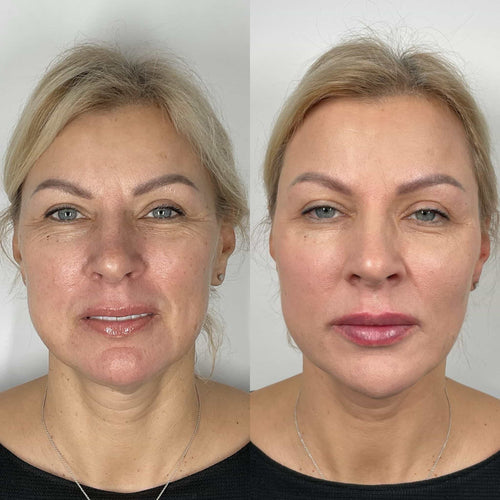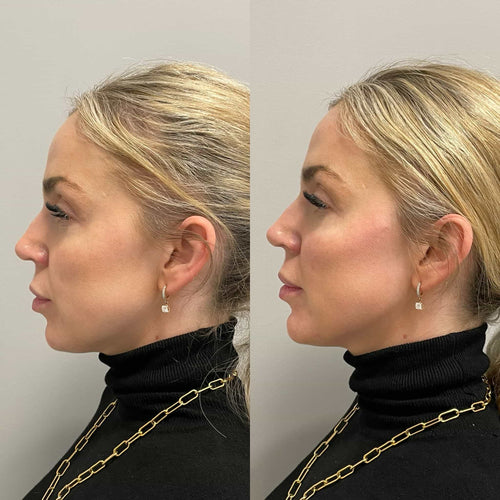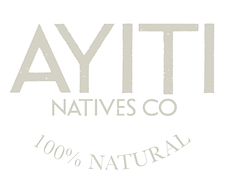Book Your Dermal Filler Appointment with Dr. Laura Geige

Understanding Tear Trough Filler

What is it?
Tear trough filler refers to a cosmetic dermal filler specifically designed to address the **tear troughs**, which are the often sunken areas beneath the eyes that can create the appearance of dark circles and fatigue.
These fillers are typically made from hyaluronic acid (HA), a naturally occurring substance in the body that helps retain moisture. HA-based fillers are known for their ability to volumize and hydrate the skin, effectively smoothing out the hollows beneath the eyes and restoring a more youthful contour.
The procedure involves injecting the filler into the tear trough area using a fine needle. The amount of filler required varies depending on individual needs and desired results. A skilled injector will carefully assess your facial structure and customize the treatment plan to achieve a natural-looking outcome.
Tear trough fillers are generally considered safe when administered by a qualified medical professional. Potential side effects can include bruising, swelling, redness, and tenderness, which typically subside within a few days to a week.
It’s important to note that tear trough filler is not a permanent solution. The results typically last for 6 to 18 months, depending on the type of filler used and individual factors such as skin elasticity and lifestyle.
Common Concerns Addressed
Tear trough filler is a cosmetic procedure that utilizes dermal fillers to address the undereye area, specifically targeting dark circles and hollows beneath the eyes.
These hollowed-out areas, often referred to as tear troughs, can be caused by various factors including aging, genetics, sun damage, and loss of facial volume.
Dermal fillers, typically made from hyaluronic acid (HA), are injected into the tear trough to restore volume and smooth out the appearance of shadows.
The results are often immediate and noticeable, with a reduction in the prominence of dark circles and an overall brighter appearance under the eyes.
Common concerns addressed by tear trough filler include:
• **Undereye hollows:** This refers to the sunken appearance beneath the eyes, which can be accentuated by aging and volume loss.
Filler effectively plumps up this area, creating a more youthful and well-rested look.
• **Dark circles:** While tear trough filler doesn’t directly target pigmentation, restoring volume in the area can help minimize the appearance of dark circles by reducing shadowing.
• **Thinning skin:** As we age, the skin becomes thinner and more delicate, making undereye hollows more pronounced.
Filler adds volume and support to the skin, improving its overall appearance.
It is important to note that tear trough filler is a temporary solution. The duration of results varies depending on the type of filler used, individual metabolism, and lifestyle factors but typically lasts for 6-18 months.
Maintaining realistic expectations and consulting with a qualified and experienced injector are crucial for achieving optimal outcomes and minimizing potential complications.
Types of Fillers Used
Tear trough filler is a cosmetic procedure designed to address the hollowness or dark circles under the eyes, commonly known as tear troughs.
These depressions can form due to various factors, including aging, genetics, and lifestyle choices like lack of sleep.
Fillers work by injecting hyaluronic acid (HA) – a natural substance found in the body that attracts water – into the tear trough area.
This plumps up the skin, reducing the appearance of hollowness and shadowing.
The result is a more refreshed, youthful appearance with brighter, less tired-looking eyes.
There are several types of HA fillers used for tear trough rejuvenation:
1. Juvederm Voluma XC:**
This thicker gel filler is excellent for adding volume and contouring the tear trough area.
It’s a longer-lasting option compared to some others, typically providing results for 18-24 months.
2. Juvederm Vollure XC: **
Designed for smoother contours, Vollure is often chosen for tear trough treatment as it provides natural-looking volume and subtle lift.
Its duration of effect is similar to Voluma, lasting around 18-24 months.
3. Restylane Refyne and Restylane Defyne:**
These fillers are known for their smooth texture and ability to blend seamlessly with the surrounding skin, making them well-suited for delicate areas like the tear troughs.
Restylane Refyne is more suitable for patients who need subtle volume enhancement, while Defyne offers a more significant lifting effect.
Both typically last 12-18 months.
4. Belotero Balance: **
Belotero is known for its ability to integrate naturally with the skin. Its smaller particle size makes it ideal for treating fine lines and wrinkles, making it a versatile option for addressing multiple concerns in the tear trough area.
It usually lasts 6-12 months.
The specific type of filler chosen will depend on individual patient needs, goals, and skin characteristics.
Consultation with a qualified and experienced injector is crucial to determine the most appropriate filler and treatment plan.
Consult Dr. Laura Geige for Your Dermal Fillers Now
The Settling Process
Expected Timeline
The settling process after tear trough filler treatment typically involves the hyaluronic acid gel gradually integrating with the surrounding tissue.
Initially, the filler may appear slightly lumpy or uneven as it adjusts to its new position.
Over the next few days to a week, the filler will start to settle and soften, becoming more natural-looking.
This process can vary depending on factors such as the type of filler used, the amount injected, individual anatomy, and aftercare practices.
Most patients experience significant settling within 1-2 weeks.
Full settling usually takes around 4 weeks.
During this period, it’s important to avoid strenuous activity, excessive sun exposure, and massage the treated area.
Get Started with Dermal Fillers – Consult Dr. Laura Geige
Following these guidelines can help ensure optimal settling and long-lasting results.
Factors Affecting Settlement Time
The settling process refers to how quickly injected dermal filler, like those used for tear trough treatment, integrates with the surrounding tissue and achieves its final aesthetic result.
This process can take anywhere from a few days to several weeks, depending on various factors.
Here’s a breakdown of common settling times:
- Initial Swelling: Usually subsides within a few days, sometimes even overnight.
- Moderate Settling: Typically occurs over the first week to ten days.
- Final Results: Most patients see their final results by two to four weeks post-treatment.
Several factors can influence how quickly a dermal filler settles:
- Type of Filler: Different fillers are composed of various substances and have unique properties that affect settling time. Hyaluronic acid fillers, commonly used for tear trough treatment, tend to settle faster than some other types.
- Injection Technique: The skill of the injector plays a crucial role. Precise placement and careful injection techniques minimize swelling and promote even distribution of the filler, leading to faster settling.
- Individual Body Response: Everyone’s body reacts differently to injected substances. Some individuals may experience faster settling due to their individual metabolism or tissue characteristics.
- Lifestyle Factors: Smoking, excessive alcohol consumption, and sun exposure can impact healing and potentially prolong the settling process.
It’s important to note that while most patients see significant improvement within a few weeks, subtle refinements may continue for several months as the filler fully integrates with the surrounding tissue.
Following your injector’s post-treatment instructions carefully is crucial to optimize settling and achieve optimal results.
Managing Discomfort During Settlement
The settling process, following any dermal filler treatment like tear trough fillers, is a natural part of your body’s response to the introduced substance.
During this phase, the filler gradually integrates with the surrounding tissue, shifting and adjusting its position over time.
This settling process can take anywhere from a few days to several weeks, depending on various factors such as:
- The specific type of filler used.
- The amount of filler injected.
- Individual healing patterns.
Managing Discomfort During Settlement
While the settling process is generally a smooth transition, some discomfort may arise during this time. Here are some tips to help manage it:
- **Ice Application:** Apply a cold compress or ice pack wrapped in a towel to the treated area for 10-15 minutes at a time, several times a day. This can help reduce swelling and inflammation.
- Elevate Your Head: Sleep with your head elevated on an extra pillow to minimize fluid buildup around the eyes.
- **Gentle Pressure:** You can gently massage the area to encourage blood circulation and reduce any stiffness or lumps.
- **Over-the-Counter Pain Relief:** Ibuprofen or acetaminophen can help alleviate mild discomfort.
It’s essential to follow your practitioner’s post-treatment instructions carefully.
Avoid activities that could put excessive pressure on the treated area, such as vigorous exercise or rubbing your eyes.
If you experience any unusual symptoms like severe pain, redness, swelling, or vision changes, contact your practitioner immediately.
Long-Term Results and Maintenance
Lifespan of Results
The longevity of tear trough filler results can vary depending on several factors, including the type of filler used, individual skin characteristics, lifestyle habits, and sun exposure.
Hyaluronic acid fillers, a common choice for tear troughs, typically last between 6 to 18 months. Some advanced formulations may offer slightly longer duration, up to two years.
Several factors can influence how long the results last. Collagen production naturally declines with age, leading to filler absorption over time. Factors like smoking, excessive sun exposure, and certain medications can accelerate this process.
Maintaining your results involves a combination of lifestyle choices and regular touch-up treatments. Protecting your skin from the sun with sunscreen and wearing protective clothing helps preserve collagen and prolong filler effectiveness.
Avoiding smoking also plays a significant role as it damages collagen and elastin fibers, leading to faster filler breakdown. A healthy diet rich in antioxidants and vitamins can support skin health and potentially enhance filler longevity.
Regular touch-up treatments are essential for maintaining the desired results. The frequency of these touch-ups will depend on individual factors and the type of filler used. Most patients require follow-up injections every 6 to 12 months to maintain volume and smoothness.
Touch-Up Treatments
Long-term results with tear trough fillers vary depending on several factors including the type of filler used, individual metabolism, and lifestyle habits.
Hyaluronic acid (HA) fillers, commonly used in tear trough treatments, are naturally broken down by the body over time. Typically, initial results last anywhere from 6 to 18 months.
To maintain the desired fullness and smoothness under the eyes, touch-up treatments are often required. The frequency of these touch-ups will depend on individual factors mentioned above and can range from every 6 months to once a year or more.
Touch-up treatments involve injecting a small amount of filler into the tear trough area to replenish lost volume and restore the initial results.
It’s important to consult with a qualified and experienced injector for both the initial treatment and any subsequent touch-ups.
Potential Complications**
Long-term results from tear trough filler treatment can vary significantly depending on factors such as the type of filler used, individual metabolism, and lifestyle habits. Generally, results can last anywhere from 6 to 18 months.
Maintaining optimal results typically involves regular touch-up treatments every 6-12 months to replenish the filler volume as it naturally degrades. It’s important to consult with a qualified aesthetic practitioner to determine an appropriate maintenance schedule based on your individual needs and desired outcome.
Potential complications associated with tear trough filler treatment are relatively rare but can occur. These may include:
- Vascular occlusion: This serious complication involves blockage of blood vessels, which can lead to tissue damage if the filler is injected too close to a blood vessel.
- Infection: As with any injection procedure, there is a risk of infection at the injection site.
- Lumps or bumps: Filler may not be evenly distributed, resulting in visible lumps or bumps under the skin.
- Asymmetry: It’s possible for one side of the tear trough to appear more filled than the other.
- Tyndall effect: This occurs when light reflects off the filler particles, causing a bluish hue under the skin.
Choosing a qualified and experienced aesthetic practitioner is crucial to minimizing the risk of complications. They will assess your individual needs, discuss potential risks and benefits, and perform the procedure safely and effectively.
The CBD Consultancy Josie Barrett Goonie Yoga and Therapy One One Three Online Aron Marquez
- Can Temple Filler Move? - June 19, 2025
- Can Kratom Powder Help With PTSD Symptoms? - June 18, 2025
- Can Anything Help With Tear Troughs? - June 15, 2025
